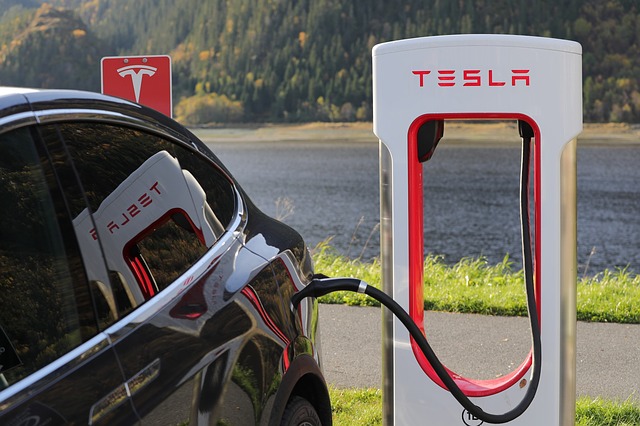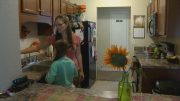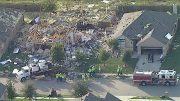Tesla Owners Hit Automaker with Class-Action Lawsuit for Botched, Nonfunctional Autopilot and Missing Standard Safety Features
Lawsuit: TSLA owners paid for missing basic safety features and paid $5,000 for botched “Enhanced Autopilot” that remains “essentially unusable”
SAN JOSE, Calif. – Tesla owners today filed a class-action lawsuit against the automaker for knowingly selling nearly 50,000 cars with nonfunctional Enhanced Autopilot AP2.0 software that still has not met Tesla’s promises, including inoperative Standard Safety Features on affected models sold in Q4 2016 and Q1 2017, according to Hagens Berman.
Though sold as premium automobiles with a focus on safety, the cars lack basic functions featured in cars at half the price. Further, the “Enhanced Autopilot,” for which customers paid an extra $5,000, is “essentially unusable and demonstrably dangerous,” the complaint reads.
The lawsuit, filed Apr. 19, 2017, in the U.S. District Court for the Northern District of California, states, “Unwittingly, buyers of affected vehicles have become beta testers of half-baked software that renders Tesla vehicles dangerous if engaged.”
The suit details Tesla’s deceptive rollout of both the Standard Safety Features and its new Enhanced Autopilot, which were touted as safe and “stress-free” for the driver. Consumers report Tesla vehicles equipped with the new autopilot AP2.0 “behaving as if a drunk driver is at the wheel,” according to the lawsuit, and the suit states that the automaker knew that its software was incapable of upholding its promises to purchasers.
“Tesla has endangered the lives of tens of thousands of Tesla owners across the country, and induced them to pay many thousands of dollars for a product that Tesla has not effectively designed,” said Steve Berman, managing partner of Hagens Berman, which represents the plaintiffs. “Tesla sold these vehicles as the safest sedan on the road. What consumers received were cars without standard safety enhancements featured by cars costing less than half the price of a new Tesla, and a purported ‘Enhanced Autopilot’ that operates in an erratic and dangerous manner.”
“To this day, Tesla has not released truly functional software for its Standard Safety Features or Enhanced Autopilot,” Berman added.
According to the complaint, Tesla sold about 47,000 affected Model S and Model X vehicles in Q4 2016 and Q1 2017, and damages for each model would include the value of the standard safety features that do not exist in all the affected cars, plus the $5,000 premium cost of the nonfunctional Enhanced Autopilot feature that many customers also purchased.
The lawsuit states that Tesla missed deadline after deadline that it gave purchasers. Regarding its Standard Safety Features which include automatic emergency braking, front collision warning, side collision warning and auto high beams, Tesla told consumers these features would be available by December 2016 and “roll out through over-the-air software updates,” but to date, only a dangerously defective Traffic Aware Cruise Control has actually come to fruition, according to the suit. The remaining features simply do not exist.
Tesla also promised that its Enhanced Autopilot software would be disseminated in the same timeframe; it also missed this deadline, according to the complaint.
In both instances of failed functionality and delivery, Tesla modified the text on its website, removing any previously disclosed deadlines and timeframes for functional Standard Safety Features or Autopilot. “Rather than deliver safe and advanced autopilot features, Tesla has delivered software that causes vehicles to behave erratically,” the suit states.
The lawsuit seeks to represent consumers who purchased or leased an affected TSLA, to reclaim economic losses for the premium purchasers paid for the safety features and enhanced autopilot that do not function as Tesla promised. Sign up for the lawsuit.
The lawsuit details accounts of three named plaintiffs who purchased affected Tesla vehicles for prices ranging from about $81,000 to $113,000. In each instance, when purchasers received their vehicles from Tesla, the Standard Safety Features and Enhanced Autopilot were non-functioning, despite Tesla’s website and marketing materials indicating that both features would be available in December 2016.
The suit also showcases online anecdotes from owners using Tesla’s new autopilot: “That driver also describes a situation where ‘[y]ou can be sailing along at 50 mph and the radar spots [an approaching] bridge and immediately slams on the brakes.’ ‘The other extreme is that you approach a stoplight with a car already stopped, and the Tesla doesn’t apply the brakes at all,’ said the driver. ‘It’s really a pretty scary experience,’ he said.”
“When consumers received these pricy vehicles, it became clear that Tesla’s marketing was all smoke and mirrors,” Berman said. “And Tesla knew when it made these promises that it didn’t have the capabilities to follow through on its deal. It knowingly deceived tens of thousands who put their faith in these cars and in TSLA.”
For more information, please visit the source link below.
Source: www.valuewalk.com




